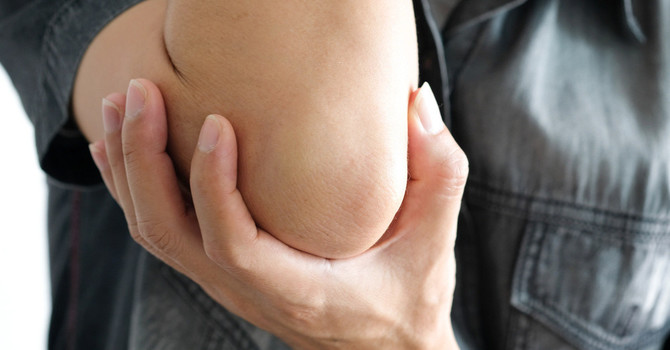This is a podcast transcription from The Modern Desk Jockey that we host each week. Please forgive the grammar and transcription errors.
For quick access to the podcast episode click here:
https://itunes.apple.com/us/podcast/the-modern-desk-jockey/id1139780808?mt=2
Hey desk jockeys, it’s Dr. Kevin Christie with another episode of the modern desk jockey. Today I will be discussing Active Release Techniques. It’s a technique that I’ve been trained in for 11 years, it’s been an amazing treatment tool in my doctor bag to get people healthy, and so we’re going to dive into that. ART might be a right fit for you, and I’ll go over how you could find someone that does it if you think it would benefit some of the conditions you’re having or some of the prevention.
Also, I will discuss some of the things they’re doing in corporate wellness which is pretty impressive, and we have two accounts with ART Corporate Solutions. So I felt it was a really good episode because so many people find so much relief with this treatment and so I’m just going to dive right into it and give you what Active Release techniques is, and my best way of doing that is just reading it right off the website. So I make sure I get it a hundred percent right, I don’t want to offend the folks at Active Release Technique.
Dr. P. Michael Leahy started Active Release Techniques® over 30 years ago. ART® began when Dr. Leahy was working with elite athletes as a way to treat soft tissue disorders, so they could get back to peak performance as quickly as possible.
Dr. Leahy studied engineering in the Air Force before becoming a chiropractor in 1984. As he watched athletes perform, and studied their movement, he realized he could combine what he knew about engineering with his chiropractic knowledge of anatomy and biomechanics to treat their soft tissue disorders quickly and get them back in their competition.
In 1988 some of Dr. Leahy’s chiropractor colleagues convinced him to hold a seminar to teach his method of treatment. The room they reserved for the event overflowed with doctors interested in learning this new technique, and afterward, Dr. Leahy quickly began formalizing a training method for ART®.
Since then, the method has been patented, and over 10,000 ART® providers have been trained. ART® has treated and transformed the lives of over 100 million people worldwide.
My personal ART story is, I wanted to be a sports chiropractor, I wanted to focus on sports injuries. Everyone I talked to said that Active Release Technique was the technique to know if you were going to treat sports injuries and overuse injuries and so I went through all the different courses that they have, I have made it a part of my treatment side of things, and it’s been very helpful.
There’s not a lot of difference between ART and say some other myofascial release techniques except that the patented part of it is it’s active, so it’s active base that’s why it’s called Active Release Technique so you’re not just laying there it’s not like a massage per se, you’re going to actively move and so essentially what what’s going to happen is the ART provider is going to find a trigger point, or scar tissue or any type of you know muscular adhesion or ligament or tendon.
You’re going to go with that muscle is going to go from a shortened position to a lengthened position while the provider’s thumb is right on that trigger point/adhesion and it’s going to release that. So that active movement of really getting that full range of motion while the provider is on that adhesion is going to really help release that, and it’s very effective in its application. But one of the really great things about ART is the actual palpation and diagnostic part of it like figuring out what’s going wrong, if it’s a nerve entrapment or a trigger point, if it’s structural damage or not.
So many times we go to the Orthopedist or we go to primary care and they do their assessments and stuff but if it’s just a muscular type pain or an overuse strain which a lot of it is, they don’t really have a great palpation assessment to figure that out and then they don’t usually perform a type of manual therapy so going to an ART provider you’re going to get that you’re going to get the orthopedic assessment and history consultation but then you’re going to get a pretty in-depth palpation exam and from there a treatment that’s going to help resolve that in many conditions.
And so for me ART has been amazing for the sports world and for my regular patients my non-athletes and then it’s been great in the corporate side of things. A handful of years ago Active Release Technique started ART Corporate Solutions, and they’re inside I think over a couple of hundred corporate locations because by providing on-site ART care. You can really stave off some of the work comp issues and to dive into that side of things so if you work for a physical job, demands job or you’re the health and safety or corporate wellness and you’re having a lot of work comp issues.
ART Corporate Solutions is reducing the cost of work comp. dramatically and how that’s happening is that OSHA deems a massage to be a form of first-aid which is a key distinction versus treatment. So it’s either treatment or first aid, and if it falls into first aid you can provide that on-site without triggering a recordable rate or a work comp claim as long as that employee doesn’t have a real true injury and doesn’t have to take time away from work or alter job duties but just as having some discomfort they can actually get massage therapy on-site without a triggering a recordable rate.
Well ART has been deemed by OSHA to be a form of movement based massage so it falls into that first aid category so Active Release Technique being extremely beneficial to a lot of these discomforts. So when the employee gets some neck discomfort, low back shoulder risk they go and get Active Release Technique and a lot of times it resolves the condition. They don’t have to go down that work comp path which can be extremely expensive and frustrating.
ART has done a lot with this, and they’ve actually kept a lot of analytics and show a ton of results with that and so they’re just making a lot of progress in the field of corporate wellness as it pertains to reducing work comp cost so that’s one of the reasons why I thought it’d be a great episode to discuss that because I know we get a lot of listeners at our health and safety or corporate wellness or HR and they’re just worried about those work comp claims, and it’s been really impressive what they’re doing.
I know we have two accounts through Active Release Technique corporate solutions and it’s been very very helpful for them, and so the analytics have proved that, so it’s been very helpful. So I just wanted to throw that in there too, so you have the understanding of how ART is not only applicable to sports, but it’s also applicable to the desk worker, to the physical job labor, all those different types of things that can cause overuse train.
So the essence of ART is correcting the muscle tendon ligament improving the structure from there that helps reduce the stress on it and then decrease the inflammation, gets a blood flow back to the area, improve the healing process and ultimately get the function back as well. So you’re going to improve your function and decrease your pain which is a great thing and a lot of the conditions that it treats.
I do think you can get great results with chiropractic care without Active Release Technique but I think finding someone that has both can be helpful or is doing some form of soft tissue, doesn’t have to be active release technique but as long as someone is addressing not only the joints but also this soft tissue or what we call the muscles tendons, ligaments is really going to benefit you as a comprehensive approach to your condition and so Active Release Technique is one of those that can really help out. I’ll have some of this information the show notes, some videos but just make sure that if you’re dealing with these conditions and you think that the manual therapy could be helpful just check out ActiveRelease.com and go from there. So just want to have a little episode on the technique that we do we do a lot of other techniques, but this is one that I felt correlated well with the regular folks and also the desk work.



